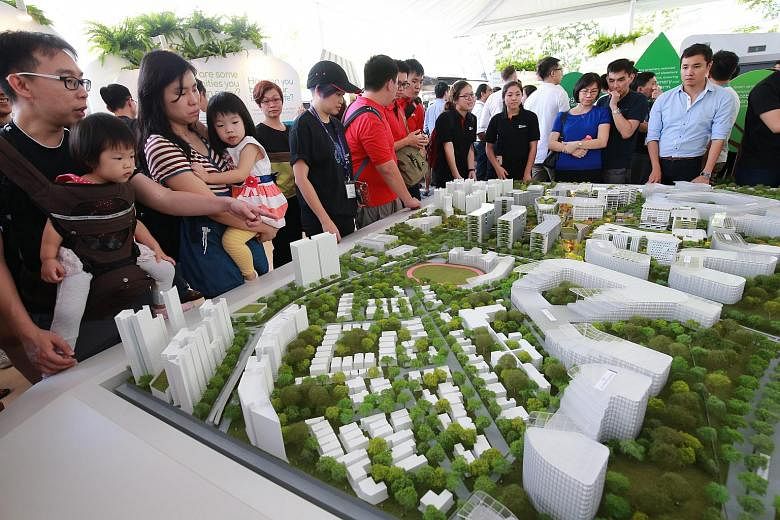A new district in the north is also the testbed for a more flexible form of land planning, which could change the way future developments are shaped.
The Punggol Digital District is primed to be a mini Silicon Valley here, generating up to 28,000 jobs in the digital economy and cyber-security sectors.
The area is also the first "enterprise district" here, helmed by a single developer who gets a freer hand in land zoning.
The master developer is restricted to a certain gross floor area (GFA) for each land use across the district - say, commercial or residential - but can give each land parcel a combination of different uses as long as the total GFA for each use does not exceed the limits at the district level. This makes for a more integrated approach to developing industrial zones.
The master developer concept is not entirely new in Singapore, with the Government selling large land parcels in Marina Bay Financial Centre to one developer. In Britain, private firms have been working with the local authorities in London as master developers of Canary Wharf and King's Cross Central. But this is the first time a master developer has been given the freedom to plan - and even change, if the need arises - what goes where in an industrial zone, as long as it meets the overall district limits. In this pilot, the master developer is the Government, emphasising the need for such areas to remain relevant as the work landscape evolves with technology and other lifestyle changes.
This flexible approach came about after a Committee on the Future Economy review in 2016, which found that the private sector and the Government have to work together more closely to realise future development plans for Singapore.
It will take some time for these plans to bear fruit. But if they are successful, they should be thriving economic hubs in their own right. More importantly, we should expect to see more towns with their own distinct identity and branding, whether through more coherent urban design or an intangible sense of culture - an appropriate step for the next wave of Singapore developments to aspire to.


